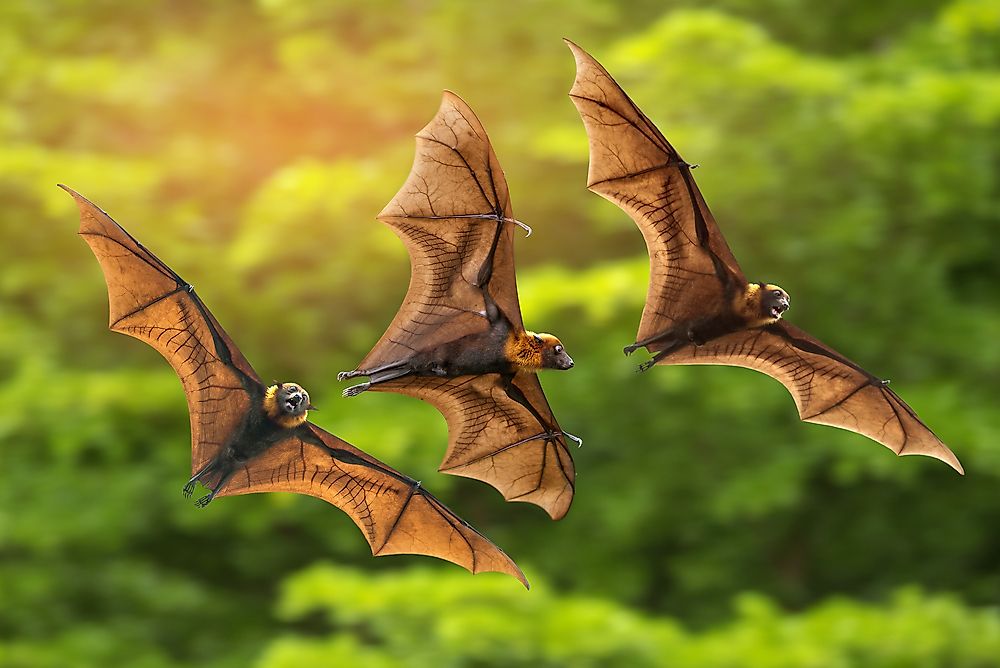

How much does it cost to get bats removed from your home? Insect-eating bats eat billions of tons of insects each summer. The remaining 1097 or so species of bats eat insects, fruit, nectar, and pollen. Vampire bats do no tattack humans or suck our blood they prefer to get their teaspoon-sized meals from other animals. Occasionally, a bat will in advertently get inside the living quarters, such as a bedroom. Bats live in walls and attic spaces because they make great places to hibernate or raise their young. Some species of bats prefer to live in houses - the same houses that people occupy. And in temperate climates, like Florida, bats may be able to stay year round. Some bat species hibernate, some migrate, and some do both. When cold weather drives insects away, bats must choose to hunker down and hibernate or migrate to warmer areas with the more abundant food supply. By emitting high-pitched sounds through their mouth or nose, bats use echolocation by intercepting with their ears the echoes that come back once the sound waves they produce bounce off the objects found in their surroundings. How do bats communicate?īats communicate with their environment mostly by using their biological sonar. If the bats have a nest in your home, they will return to the same spot, year after year. In April, these same bats return to their nesting places. Some bats leave for the winter, but most hibernate in their nest. Whenbatsare in flight during the night, they are conscious of artificial lights and avoid them as much as they can. Being nocturnal animals, they have adapted to extremely low light conditions. They also avoid both natural and artificial lights. Are bats afraid of the light?īats are definitely not blind but don't have perfect vision. There’s no magic bat spray or bat powder or any substance or machine or device that will get rid of bats and keep them out of the attic or home. There is no such thing as a working bat deterrent device. There is no such thing as an effective bat repellent. In addition, their droppings, called “guano,” can contaminate the soil with a fungus that causes Histoplasmosis, according to the Centers for Disease Control and Prevention Is bat removal covered by homeowner's insurance?īats aren’t the most common pest problem, but they still plague plenty of homeowners… On the other hand, if bats cause sudden and accidental physical damage that’s covered under your homeowner’s insurance, your policy could kick in to help pay for repairs - but not the removal of the bats themselves. Are bats dangerous?īats are associated with diseases, including rabies. Upon leaving their roost, bat fly to a stream, pond, or lake where they dip their lower jaw into the water while still in flight and take a drink. Where do bats go during the day?ĭuring the day bats sleep in trees, rock crevices, caves, and buildings.Bats are nocturnal (active at night), leaving daytime roosts at dusk. It was previously believed bats migrated to caves or mines for hibernation, but we now know many will hibernate inside homes and buildings. They hibernate from late fall (October/November) until spring arrives (March/April). Do bats leave the attic for the winter?īats will sometimes appear in your home during the winter months. Hibernating animals have to emerge from sleep once every few days to move around, eat some of their stored food and urinate and defecate when necessary. This time of year, millions of bats from a spectrum of species are hunkered down in caves, where they‘ll huddle together for warmth and hibernate through the winter. Carefully remove the entire colony of bats using bat one-way doors.Different species might require a different approach. How do professionals remove bats from your homeįollow these 5 simple removal methods for bat control: If the hibernacula (place of hibernation) temperature is too warm, then they expend too much energy. Big Brown bats have figured out that attics can provide the perfect temperature for survival and have adapted to hibernating in attics rather than caves. 21 Random facts about bats What temperatures can bats withstand?īats require specific temperatures for hibernation ranging from 35-40 degrees Fahrenheit.


 0 kommentar(er)
0 kommentar(er)
